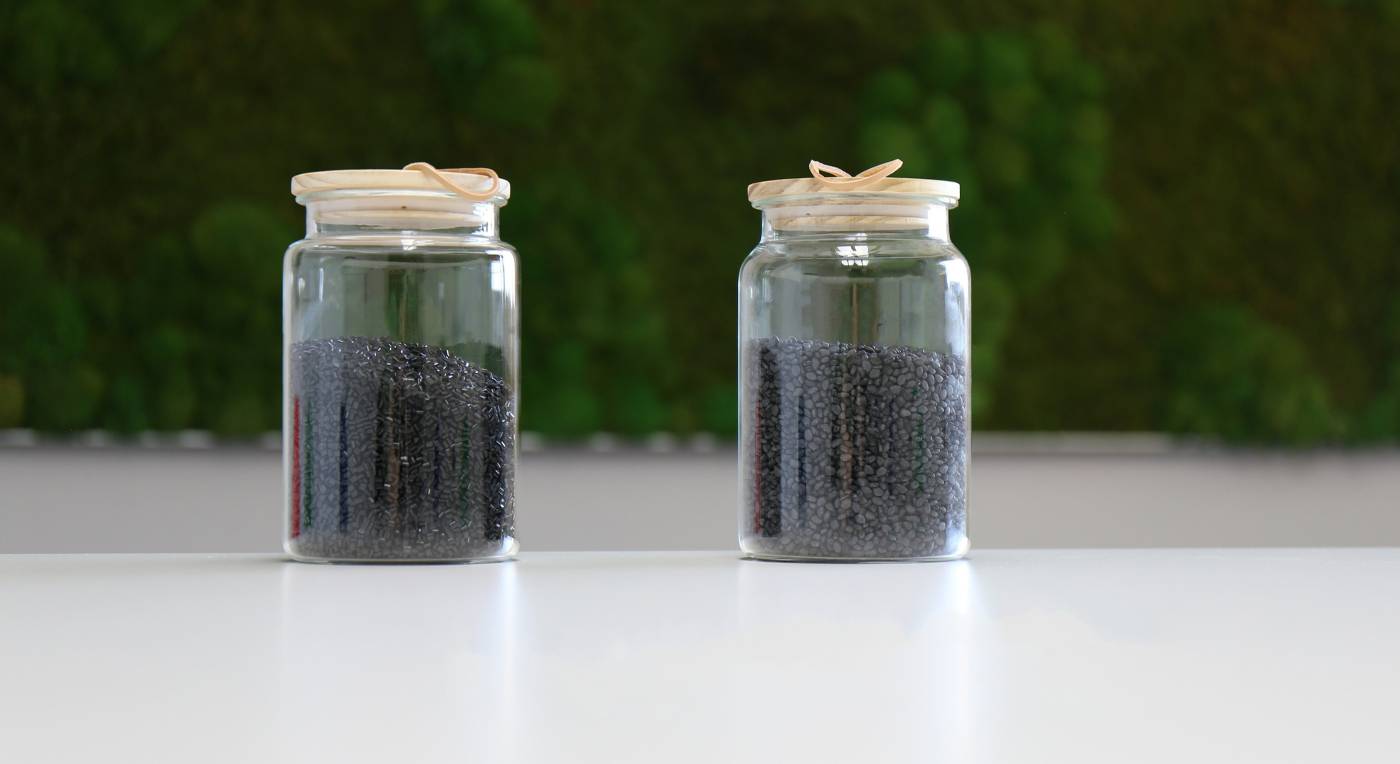
Vehicle production causes emissions on account of material, transport and the further processing required to produce components. In terms of the emissions during vehicle production and the utilization phase, the production of just one small car results in around 20 tons of CO2.
Heavy use is made of plastics in automobile production. ABS is one of the standard materials. With an average of 13 kg being used in the vehicle, emissions of 40 kg of CO2 are emitted.
Due to odor formation, the addition of recycled plastics in the interior is often out of the question, which means that components have to be made from newly produced plastics.
When selecting materials, therefore, it is important to identify alternatives capable of storing CO2. The material and processing properties here should be virtually identical. Cost and weight also play a role.
Plastics generally have a CO2 footprint on account of their petrochemical basis, but also due to processing. This must be balanced out in order to produce a CO2 storing material.
There are already various concepts for storing CO2 in material, in wood, for instance, or natural fibres, vegetable oils, vegetable coal, etc. on the market. As a general rule, these materials are suitable for storing emissions.
Essential material properties such as rigidity and tensile strength often suffer as a result. The addition of recyclates can also help to reduce the overall carbon footprint.
To sum up, what is being sought is a material with properties similar to those of the original material and offering the possibility of adding recycled plastic.
Our partner company Carbonauten has developed materials with similar properties to new products. Biomass, which would release the CO2 that has been stored into the atmosphere when it rots, is used. This is used to make plant-based plastic, which captures emissions in material.
As a result, the new ABS material can store -0.4 CO2 per kg of material and so generate a negative carbon footprint.
Due to the fact that odors are absorbed during production, both virgin and recycled plastic can be used, which allows for interior use and makes the benefit of a circular economy more attractive.
A comparison of the CO2 footprint is also made using the QLCA tool developed by EDAG to show the CO2 footprint of the original and the new material.
The advantages:
Combating the climate crisis and reducing CO2 emissions starts with the materials available for use in our everyday lives. These are nowadays becoming more and more prevalent, though often only in conjunction with low material requirements or high costs.
Plastic is one of the main components of vehicles, not only in visible areas such as the interior and exterior, but also in concealed areas behind trims. As yet, only rare use has been made of CO2-reduced or CO2-negative materials in the form of components, since odor emissions in the interior could be perceived as objectionable and their mechanical properties are inadequate.
The use of recycled plastics would, however, be an important means of promoting the circular economy and sustainable operations. At the same time, the problem of the odors produced by recycled plastics should also be improved, as this represents a major obstacle to their interior use.
The aim, therefore, is to find a material that already contains CO2, and so from the very outset has a negative carbon footprint, to balance out transport and processing into components. This should make it possible to avoid CO2 emissions both from electric vehicles on the road, and also from production.
During its research into available materials, the EDAG Group became aware of a material produced by Carbonauten which uses biomass to store the CO2 that is normally released into the atmosphere after rotting. This creates biocarbon, which is mixed with recycled or new plastic, and as a result has attractive material properties. Odors from recycled plastics should also be neutralized during production, making it possible for them to be used in the interior.
In line with our use case, one component was produced using a conventional material, and one using CO2- negative ABS. With the help of the QLCA tool, the CO2 footprint was tracked and extrapolated to give an average percentage of the ABS used in a vehicle.
It was demonstrated that, by taking the new CO2-negative material instead of ABS, emissions were reduced from 40 kg CO2 to -5.5 kg CO2 per vehicle on average. The plastic components therefore act as emission reducing agents. Using other materials, PP for example, enables emissions to be reduced even further during production.
New materials are constantly being developed in line with this principle, and in the future there will be more and more materials with the potential to store CO2 and therefore have a positive influence on emissions in automobile production and other industries. Already, the EDAG Group is showing that even components can be CO2-neutral.